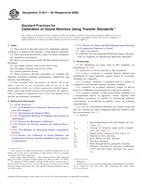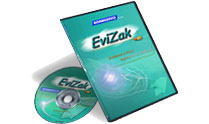Wir benötigen Ihre Einwilligung zur Verwendung der einzelnen Daten, damit Sie unter anderem Informationen zu Ihren Interessen einsehen können. Klicken Sie auf "OK", um Ihre Zustimmung zu erteilen.
ASTM D5011-92(2009)
Standard Practices for Calibration of Ozone Monitors Using Transfer Standards
Automatische name übersetzung:
Standardverfahren zur Kalibrierung von Ozon Monitore Mit Über Standards
NORM herausgegeben am 1.3.2009
Informationen über die Norm:
Bezeichnung normen: ASTM D5011-92(2009)
Anmerkung: UNGÜLTIG
Ausgabedatum normen: 1.3.2009
SKU: NS-29514
Zahl der Seiten: 29
Gewicht ca.: 87 g (0.19 Pfund)
Land: Amerikanische technische Norm
Kategorie: Technische Normen ASTM
Kategorie - ähnliche Normen:
Die Annotation des Normtextes ASTM D5011-92(2009) :
Keywords:
boric acid titration, gas phase titration, ozone, primary standard, transfer standard, Calibration--air/atmospheric analysis instruments, Ozone (O3), Photometry, Ultraviolet (UV) analysis--atmospheric applications, Ultraviolet (UV) calibration, ICS Number Code 13.040.01 (Air quality in general)
Ergänzende Informationen
| Significance and Use | ||||||||||||||||||
|
The reactivity and instability of O3 precludes the storage of O3 concentration standards for any practical length of time, and precludes direct certification of O3 concentrations as SRM's. Moreover, there is no available SRM that can be readily and directly adapted to the generation of O3 standards analogous to permeation devices and standard gas cylinders for sulfur dioxide and nitrogen oxides. Dynamic generation of O3 concentrations is relatively easy with a source of ultraviolet (UV) radiation. However, accurately certifying an O3 concentration as a primary standard requires assay of the concentration by a comprehensively specified analytical procedure, which must be performed every time a standard is needed. The primary UV standard photometers, which are usually used at a fixed location under controlled conditions, are used to certify transfer standards that are then transported to the field sites where the ambient ozone monitors are being used. See Practice D 5110. The advantages of this procedure are: All O3 monitors in a given network or region may be traced to a single primary standard. The primary standard is used at only one location, under controlled conditions. Transfer standards are more rugged and more easily portable than primary standards. Transfer standards may be used to intercompare various primary standards. |
||||||||||||||||||
| 1. Scope | ||||||||||||||||||
|
1.1 These practices describe means for calibrating ambient, workplace or indoor ozone monitors, using transfer standards. 1.2 These practices describe five types of transfer standards: (A) Analytical instruments (B) Boric acid potassium iodide (BAKI) manual analytical procedure (C) Gas phase titration with excess nitric oxide (D) Gas phase titration with excess ozone (E) Ozone generator device. 1.3 These practices describe procedures to establish the authority of transfer standards: qualification, certification, and periodic recertification. 1.4 This standard does not purport to address all of the safety concerns, if any, associated with its use. It is the responsibility of the user of this standard to establish appropriate safety and health practices and determine the applicability of regulatory limitations prior to use. See Section 8 for specific precautionary statements. |
||||||||||||||||||
| 2. Referenced Documents | ||||||||||||||||||
|
Empfehlungen:
EEviZak – alle Gesetze einschließlich ihrer Evidenz in einer Stelle
Bereitstellung von aktuellen Informationen über legislative Vorschriften in der Sammlung der Gesetze bis zum Jahr 1945.
Aktualisierung 2x pro Monat!
Brauchen Sie mehr Informationen? Sehen Sie sich diese Seite an.




 Cookies
Cookies
